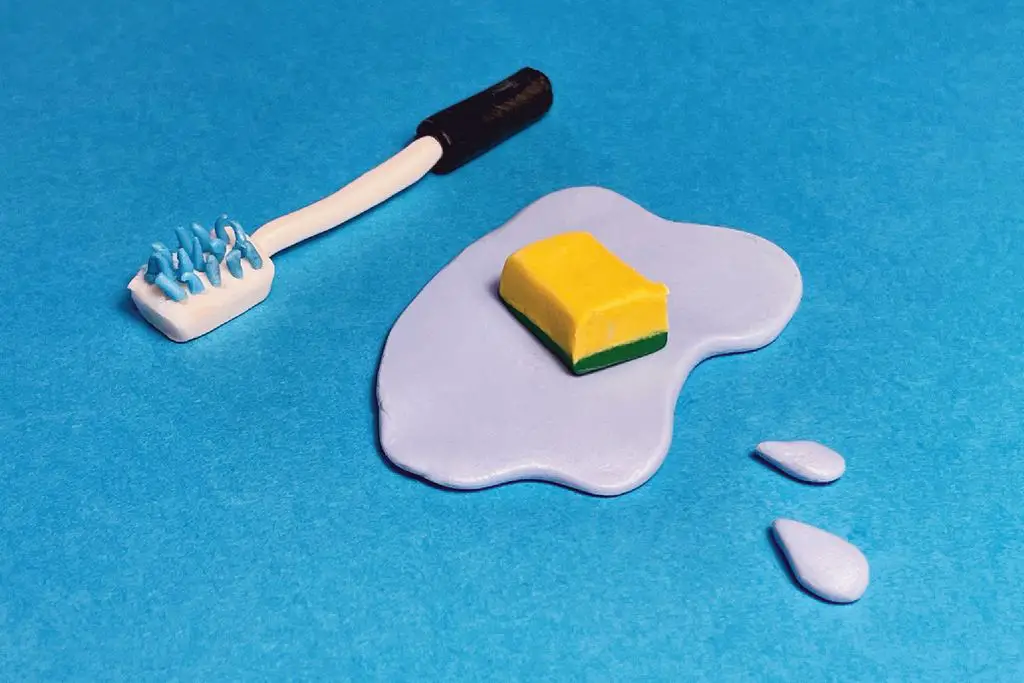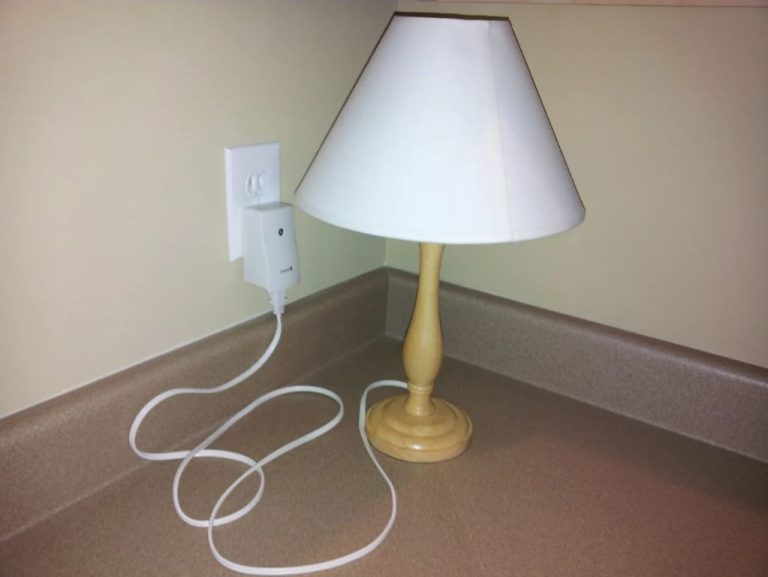How Should I Store My Kitchen Sponge?
Proper storage of kitchen sponges is essential for food safety and preventing the spread of harmful bacteria in the kitchen. Kitchen sponges are one of the top causes of cross-contamination in the home and can harbor harmful pathogens like Salmonella, E. coli, and Listeria if not cleaned and stored properly. According to SpongeBath LLC, kitchen sponges are the dirtiest items in the home and can lead to foodborne illnesses if used improperly (https://digital.nyc/startups/spongebath-llc). This article provides an overview of best practices for storing, cleaning, and replacing kitchen sponges to limit bacterial growth and contamination risks.
Bacteria Growth
Kitchen sponges provide an ideal environment for bacteria to grow rapidly. The warm, moist, and porous nature of sponges allows bacteria to thrive and multiply quickly (1). Food particles and other organic matter trapped in the sponge supply nutrients for bacteria. Studies show that bacteria levels in used kitchen sponges can be 200,000 times higher than on a toilet seat (2). Within a day, a new sponge can accumulate millions of bacteria. The longer a sponge is used, the higher the bacterial load becomes. Dampness is a key factor, as bacteria require moisture to survive and reproduce. A wet sponge sitting in a sink or dish rack provides ideal conditions for rapid bacterial growth.
Cleaning Methods
Regularly cleaning your kitchen sponge is important to remove bacteria and prevent it from spreading around your kitchen. According to Martha Stewart, the most effective cleaning method is to soak the sponge in a bowl of undiluted white vinegar for 5-7 minutes. This simple process can eliminate up to 99% of bacteria. After soaking, rinse the sponge thoroughly before continuing to use it.
The vinegar works as a disinfectant to kill germs, bacteria, and mold. Its acidic nature breaks down grease and also helps remove stains. This method is also very convenient, using an inexpensive and common household item. Just be sure to use full-strength vinegar for maximum efficacy.
Other options are microwave heating or running the sponge through a dishwasher cycle on the heated dry setting. However, research shows the vinegar soak to be the most reliable bacteria killer.
For tough odors, you can also occasionally sanitize the sponge by boiling it in water for 5 minutes. But frequent vinegar soaks are the best practice for thoroughly disinfecting on a regular basis.
Drying Out
One of the most effective ways to inhibit bacteria growth is to allow your sponge to completely dry out between uses. Sponges left damp provide an ideal moist environment for bacteria to rapidly multiply.
Be sure to thoroughly wring out your sponge after washing dishes. Do not leave it sitting in a pool of water in the sink or drip tray. After washing dishes, take a few extra seconds to squeeze excess moisture from the sponge.
You can dry it out faster by placing it on a clean dish drying rack or hanging it over the faucet. Microwaving wet sponges is controversial – some experts warn it could ignite or burn the sponge. A safer option is letting it air dry completely.
Replace the sponge more frequently if it’s not possible to let it dry fully between uses. The prolonged dampness causes faster bacteria growth.
Replace Frequently
It is recommended that kitchen sponges be replaced every 1-2 weeks for optimal hygiene. According to this article, replacing kitchen sponges frequently helps minimize the growth of bacteria, mold, and yeast. Over time, sponges absorb food particles, grease, and moisture which create an environment where germs can thrive.
Studies have shown that sponges used daily can contain up to 54 billion bacteria per square inch within 2 weeks of use. This includes potential pathogens like E. coli and Salmonella. Even with daily cleaning, bacteria continue growing rapidly. Replacing sponges every 1-2 weeks helps prevent the spread of illness and contamination in the kitchen.
When it’s time for replacement, it’s recommended to throw old sponges in the garbage rather than rinsing and reusing them. Getting a new, clean sponge helps provide peace of mind regarding kitchen hygiene.
Alternatives
While sponges are commonly used for cleaning dishes, there are more sanitary and eco-friendly alternatives to consider. Dish cloths made of cotton or bamboo can be used in place of sponges. They tend to dry faster between uses, reducing bacteria growth (Southern Living). Cloths should be replaced or washed frequently to prevent cross-contamination. Silicone scrubbers are also an option – they resist odors and buildup better than sponges (Kempii). Look for food-grade silicone scrubbers to ensure safety. The scrubby side of these can help loosen stuck-on food. For an eco-friendly, zero waste option, reusable scrub cloths like Skoy or Marley’s Monsters are available. These can simply be rinsed and reused. Ultimately, finding a suitable alternative comes down to personal preference. Any option that encourages more frequent replacement or washing will promote better hygiene.
Storage
Proper storage is key to prolonging the life of your kitchen sponge and preventing bacteria growth. Here are some tips for optimal sponge storage:
Use a designated sponge holder or caddy. This allows the sponge to dry out between uses and prevents it from sitting in a pool of water or dirty dishes. Some popular options are wire holders, ventilated plastic containers, and ceramic holders with slots for drying.1

Store the sponge separately from dishes, utensils, and food. Keep it away from moist and dirty areas where bacteria can thrive.
Allow the sponge to air dry completely before putting it away. Dry between uses also by squeezing out excess water and moisture.
Replace kitchen sponges frequently, at least every 1-2 weeks. Sponges with cellulose tend to harbor more bacteria over time. Throw away any sponges that smell bad or look deteriorated.
Consider alternative cleaning materials like silicon scrubbers, brushes, and dishcloths. These tend to dry faster and breed less bacteria.
Never store wet sponges in closed spaces or containers. Make sure the storage allows for ample airflow and ventilation.
Signs of Deterioration
You should toss out your kitchen sponge when it starts to show signs of deterioration, as this indicates it is full of bacteria and no longer effectively cleaning. According to Martha Stewart, you should throw away your sponge once it begins to smell or becomes very slimy, even if you’ve only been using it for a week or two. Smell is one of the biggest indicators it’s time for a new sponge. A sour or foul odor means microbes and germs have built up. The sponge may also change texture and feel slimy or mushy (Martha Stewart). Visible mold is another clear sign deterioration has set in. If the sponge changes color or has fuzzy mold spots, discard it right away. Softening and breakdown of the actual sponge material also signals replacement time. Overall, if your sponge has an off smell, texture, or appearance, play it safe and get a fresh one.
Proper Disposal
Used kitchen sponges should be disposed of properly to avoid spreading bacteria. Here are some tips for safe disposal:
Throw away in the garbage – Putting used sponges in the trash is the most common method of disposal. Make sure to put the sponge in a plastic bag first to contain bacteria.
Burn or incinerate – Some people recommend burning used sponges to destroy bacteria. Check local ordinances first and avoid inhaling smoke.
Compost only natural sponges – Sponges made of cellulose or other biodegradable materials can potentially be composted. Do not compost sponges made of plastic, foam or metal.
Recycle plastic sponges – While not all recycling programs accept kitchen sponges, some specialized plastic recycling facilities may. Check with local recyclers first before attempting to recycle.
Avoid flushing down toilet – Never flush kitchen sponges down the toilet to avoid clogging plumbing.
Replace frequently – The best way to avoid disposal issues is to replace kitchen sponges often, at least weekly. This limits bacterial growth requiring disposal.
When in doubt, throw used sponges in the trash in a sealed bag. Always wearing gloves when handling used sponges helps prevent spreading bacteria.
Summary
Keeping your kitchen sponge clean and storing it properly is important for food safety and hygiene. To recap, here are the key steps for sponge care and storage:
- Clean sponges thoroughly after each use, either in the dishwasher or by microwaving.
- Allow sponges to dry out completely between uses, either in a dishrack or hanging over the sink.
- Replace your sponge at least weekly, or more frequently if it shows signs of wear.
- Consider using brush alternatives like dish cloths that can be easily laundered.
- Store sponges in a dry spot away from moisture and dirt.
- Watch for torn, smelly, or moldy sponges and discard immediately.
- When in doubt, remember it’s better to replace your sponge sooner rather than later.
Following these simple guidelines will help minimize bacteria growth on your sponges and create a more hygienic kitchen environment.






